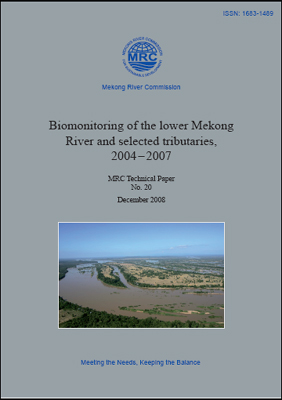Biological monitoring in the basin

A new technical paper finds that the main rivers of the Lower Mekong Basin have not yet been severely harmed by water resource development or waste disposal. But some are showing signs of stress.
The Mekong River Commission established a biological monitoring programme in response to Article 9 of the agreement creating the commission in 1995. Groups of organisms to be monitored included diatoms, zooplankton and both littoral and macroinvertebrates. Full-scale data collection began with 20 sites sampled in 2004, 16 in 2005, 21 in 2006 and 20 in 2007. In total, 51 sites were sampled, some in two or more years. For the four groups of organisms, three indicators of ecological status were calculated for each sample (richness, abundance and average tolerance). Data from 14 reference sites were then used to generate 12 interim biological guidelines, similar to those proposed for the MRC water quality assessment programme (see Catch and Culture, Vol 14, No 3).
The results have recently been published as MRC Technical Paper No. 20, Biological monitoring of the lower Mekong River and selected tributaries 2004- 2007. Of 77 samplings conducted over four years, 28 were considered excellent (with 10-12 guidelines met), 32 were good (7-9 guidelines met) and 17 were moderate (4-6 guidelines met). None were considered poor (0-3 guidelines met). "This rating suggests that the principal rivers of the Lower Mekong Basin have not yet suffered severe harm from the development of water resources of waste disposal. However, some rivers are shoing signs of stress," the paper finds.
Based on excerpts from the summary and outlook
Choose a newsletter: